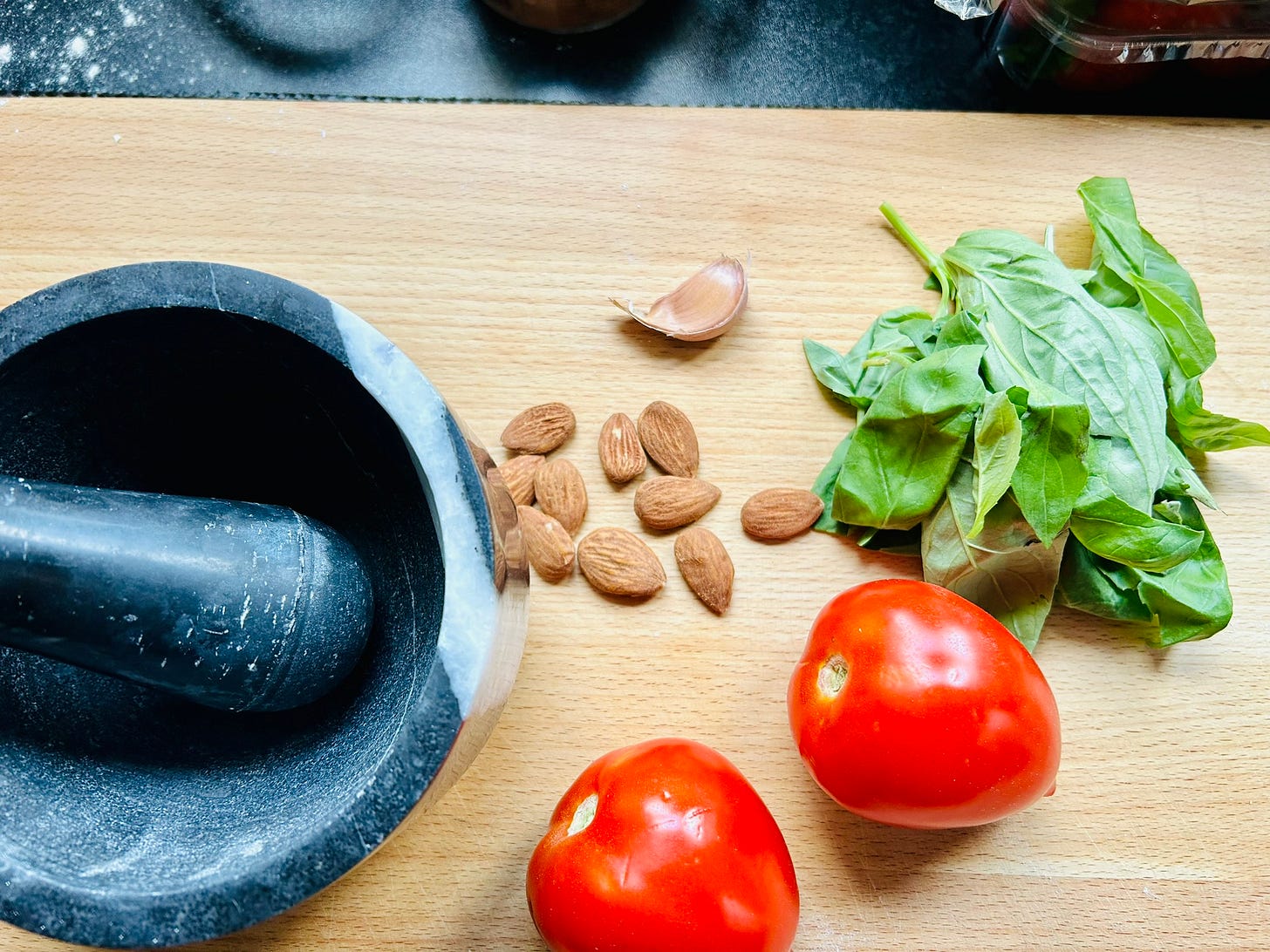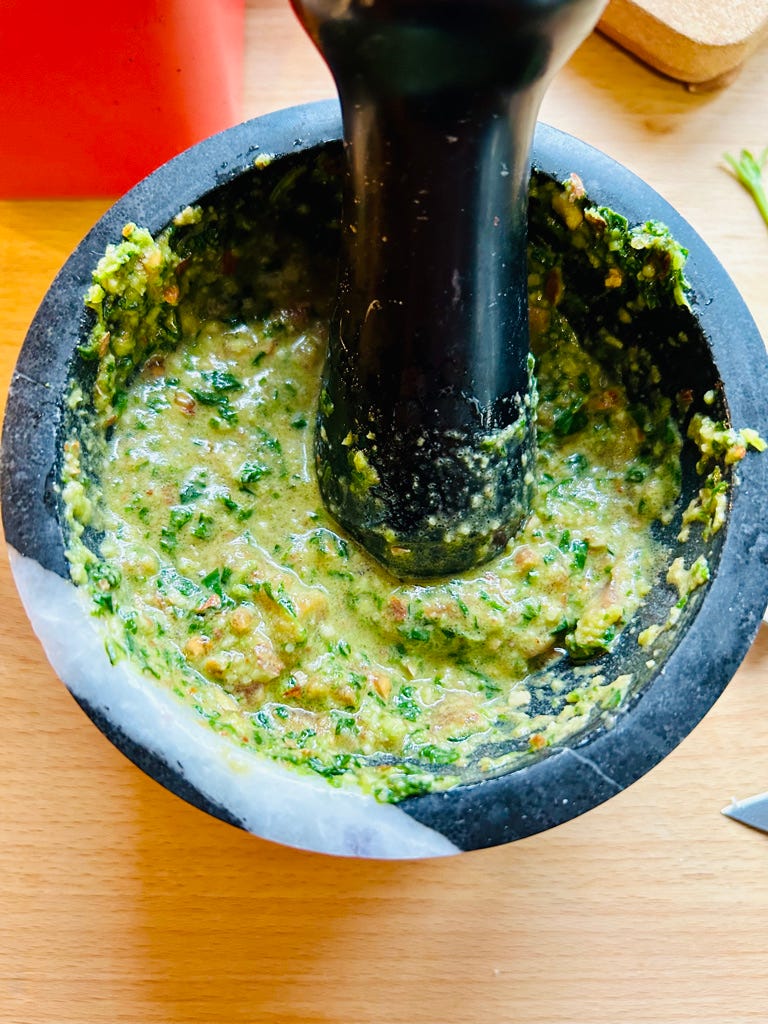My Nonna and everyone else in Trapani called this recipe Pasta cun l’agghia (pasta with garlic), and as its name reveals, it is quite garlicky. These days the name has been changed to Pasta con il pesto alla Trapanese, probably because Trapani has become a much more touristy place, and they want people to understand it and connect it to the concept of pesto (see below).
This amazing sauce can be used also to top bruschette, or on top of mackerels. It is traditional to serve this with a side of fried cubed aubergines, fried small fish or, believe it or not, fried potatoes…as in fries!!
Before we dig into the recipe I must reveal something to you all: Italians don’t really love garlic as much as you think they do. This might come as a shock to you, as the stereotype of Italians abroad is somehow one of fervent garlic lovers. The truth is that most contemporary Italians find raw garlic quite aggressive and don’t use it very often in their food. Italians are also obsessed with digestion, and they find it extremely unpleasant when people eat a lot of garlic and then go out to hang out with people. The smelly garlicky breath and burps are a real social faux-pas in Italy. Jealous Italians even have jokes about it! For example when your partner goes out without you, and you want to make sure they are not flirting with other people, make sure you cook them a very garlicky meal beforehand and nobody will go near them.
Now- let’s talk about pesto for a minute. If you think it is that ubiquitous green spread made mostly with basil and garlic that you see everywhere and on top of everything all over the world…you might have to think again!
That is what we in Italy call Pesto alla genovese (from Genoa) and it is traditional to the Liguria region. The word “pesto” comes from the verb “pestare”, which means to crush, and it usually refers to many different recipes made in a mortar. Different regions have different types of pesto and this traditional pesto recipe from the Trapani region has tomatoes and the always present Sicilian almonds.
My nonna used to make this in a wooden mortar with a wooden pestle. The image of this mortar is imprinted in my memory together with the very strong garlic aroma that came off her hands after making this sauce. Nowadays you will be forgiven if you want to use a blender; you will only need a few seconds as you are looking for a rough consistency and not necessarily a very smooth sauce. I do recommend though making it in a mortar as it is always a beautiful hands-on experience; and unlike pesto Genovese, it is not going to be a massive workout.
Ingredients
Serves 2
Keep reading with a 7-day free trial
Subscribe to Cooking by Ear to keep reading this post and get 7 days of free access to the full post archives.






